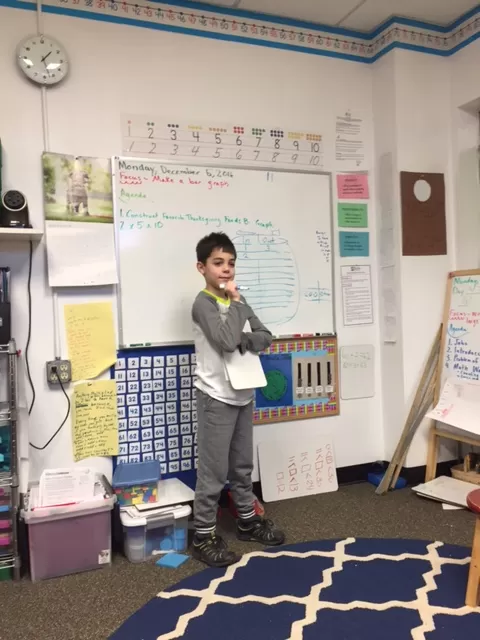Our mission is to cultivate critical thinking;
promote independence and self-confidence;
instill empathy, respect and responsibility; and inspire a love of learning.
-Bixby Mission Statement
As a progressive school, Bixby values deep understanding. According to Alfie Kohn, a proponent of progressive education, “The point is not merely to challenge students — after all, harder is not necessarily better — but to invite them to think deeply about issues that matter and help them understand ideas from the inside out.” Deep understanding results from giving students the opportunity to make sense of their work. This sense making is supported by a constructivist approach to teaching and learning (another progressive education tenet) which sees the learner as actively making meaning rather than merely absorbing information. With this in mind, in first through third grade math I strive to give students many opportunities to make sense of numbers.

In addition to engaging students to use what they know about numbers to solve new problems, using their own problem solving methods strengthens their understanding of number concepts – especially place value. In contrast, teaching a procedure such as ‘carrying,’ ‘borrowing,’ and ‘long multiplication’ sometimes removes the emphasis from thinking and sense-making to memorizing and following a series of steps – a student can do the arithmetic correctly without understanding why it works or how it is applicable to a variety of problems.
Research about mathematical thinking and learning supports careful timing of teaching procedures and algorithms. According to Fernádez and Estrella (Teaching Children Mathematics, May 2011), children who go through the development and application of strategies for mental addition and subtraction show greater conceptual understanding. In one study, (Kamii, 2000, p. 82), second graders who had been taught the algorithm for ‘carrying’ were compared to those who had not; when given the problem 7 + 52 + 186, 45% of those who had not been taught the algorithm calculated the correct answer compared to 12% who had. The other difference between the two groups was that the students who had not been taught the algorithm, had fewer unreasonable answers (246, 243,236, 235, etc.) compared to the incorrect answers of those (9,308, 986, 909, 29, etc.) who had. In other words, the capacity to think about numbers and their values is an important aspect of developing logic about reasonableness and accuracy.

As I watch and listen to the math community of the classroom, I am aware of the power of students listening to each other’s thinking and how this expands their understanding of the many ways a problem might be solved. This also leads the students to think about for which situations a given approach might be more efficient. This practice leads them to develop consistent, reliable ways of approaching problem solving. It isn’t about “I can’t solve this because I don’t know how (I don’t have an algorithm I have memorized),” it is about “I haven’t solved this yet, and here is what I can try.” If students believe they have to wait to be taught how to solve math problems, we have wasted their potential. Rather, it is through this process of asking, trying, discovering, and thinking that I know they are building key connections and a deep understanding of numbers that will support their ability to learn, understand, and do mathematics with confidence as they continue through life.



